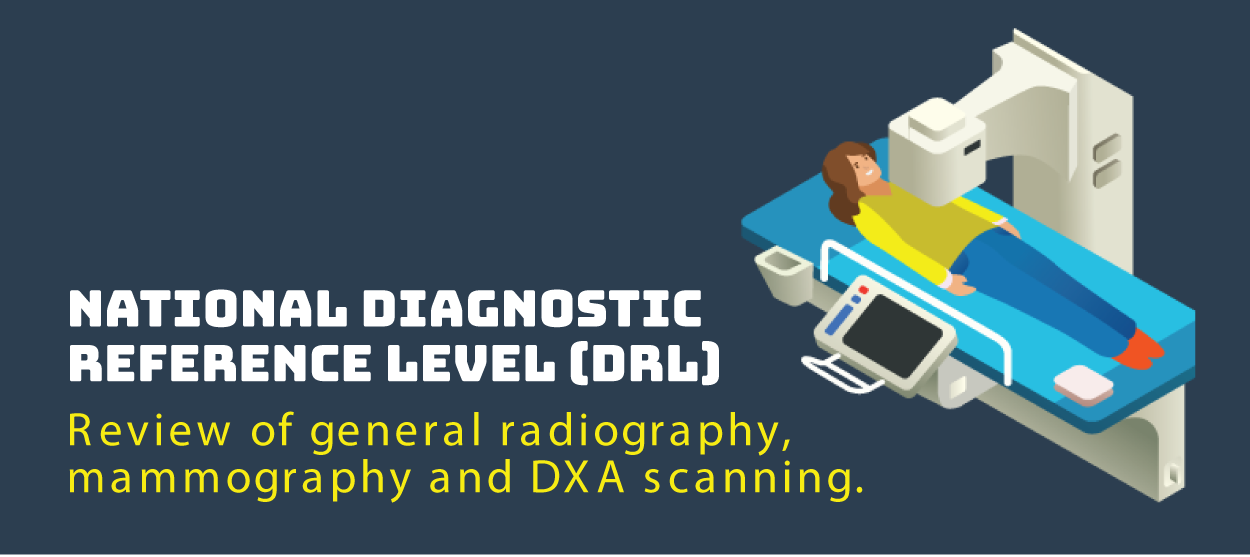HIQA report shows reduction in radiation doses being received in Ireland

The Health Information and Quality Authority (HIQA) has today published a report on new standard levels of ionising radiation for X-ray procedures. The study found that the typical level of ionising radiation received by patients in procedures such as X-rays has reduced in Ireland over the past 10 years.
Following a survey of service providers, HIQA has updated national diagnostic reference levels (DRLs) for general radiography and mammography, and produced national DXA DRLs for the first time in Ireland. DRLs represent typical radiation dose levels set for common medical imaging procedures and clinical tasks undertaken in Ireland. This new national data allows service providers to compare the radiation doses they issue to patients with national DRL figures, identify medical radiological procedures that require review and put corrective actions in place to reduce exposure to ionising radiation where needed to further improve safety.
HIQA found that the level of radiation patients are being exposed to has reduced when compared to a 2010 HSE study. Reductions ranged from 2-27% for all medical imaging procedures reviewed as part of this study. This new national DRL data compares positively with recently published European DRLs, as the vast majority of Irish DRLs, for both adult and paediatric radiography, are below that referenced in guidance issued by the European Commission.
John Tuffy, HIQA’s Regional Manager for Ionising Radiation, said “This data shows us that people are now typically receiving reduced radiation doses for simple X-ray procedures such as chest X-rays in Ireland. This means that the risk associated with X-rays is reduced, which is a positive outcome for patient safety. When the amount of ionising radiation received by patients is reduced and the diagnostic integrity of images is still maintained, this is a positive outcome for people using services.”
It was noted that the total number of general X-rays conducted in Ireland has remained mostly consistent since this was last surveyed in 2010, however increases have been seen in screening mammography services.
In Ireland, HIQA found that newer equipment is used in mammography, followed by paediatric radiography, where dedicated equipment is used, followed by adult general radiography and DXA. A significant portion of DXA equipment and general radiography equipment were 10 years or older.
Sean Egan, HIQA’s Head of Healthcare Regulation, stated “It is hoped that the key areas identified in this report will aid service providers in optimising patient doses within their services. These results can provide patients the reassurance that Ireland’s data compares favourably with guidance issued by the European Commission and the risk associated with X-rays of this nature are lower now than before.
“HIQA will continue to build upon its programme to date to promote patient safety and protection from ionising radiation. We are committed to sharing lessons learned from our regulation of exposure to ionising radiation in Ireland. We continue to investigate and inspect facilities in which these services are provided to promote a high-quality service and care for Irish patients.”
Ends.
Further Information:
Marty Whelan, Head of Communications & Stakeholder Engagement
085 8055202, mwhelan@hiqa.ie
Notes to the Editor:
- National DRL values are typical radiation dose levels set for common medical imaging procedures and clinical tasks undertaken in Ireland. These allow medical facilities to compare local facility DRLs, representative of patient dose, to a national standard and use them as a benchmark to optimise patient radiation dose.
- Dual-energy X-ray absorptiometry (DXA) is a type of medical exposure typically used to assess bone density in service users where low bone density or osteoporosis is suspected.
- National DRLs are set as the 75th percentile of the distribution of median values obtained. This means that out of all values surveyed 25% of Irish doses lie above this national DRL value and 75% of national doses are below this figure. A national median, or 50th percentile dose of median values obtained was also established. This means that out of all values surveyed, 50% of doses will be above, and 50% will be below this average figure.
- It was found that 46.9% of DXA equipment, 43.9% of general radiography equipment, 31% of dedicated paediatric radiography equipment and 9.8% of mammography equipment were 10 years or older.
- National DRLs for general adult radiography and mammography were last surveyed in Ireland in 2010.
- Medical exposure to ionising radiation is when radiation is used as part of diagnosis such as a dental X-ray or CT scan or the use of radiotherapy as part of cancer treatment at a hospital. It also includes radiation received for medical research purposes and radiation received by carers and comforters while attending a patient.